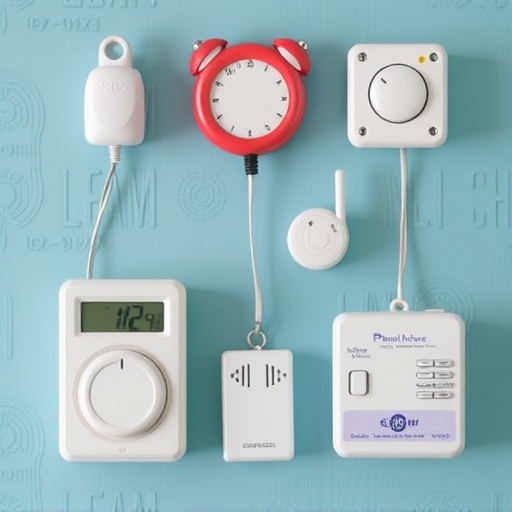Personal Safety Beacons, armed with GPS tracking, automatic fall detection, and a powerful Personal Attack Alarm Sound within a defined Range, offer crucial protection in isolated or unfamiliar settings. These tools enable swift rescue during emergencies, especially outdoors or in remote areas. While they enhance safety, continuous location sharing raises privacy issues, necessitating users to manage settings carefully for a balanced approach.
Personal safety beacons equipped with location-sharing capabilities have emerged as a modern solution, empowering individuals with enhanced personal protection. As our world becomes increasingly urbanized and bustling, these devices offer peace of mind in emergency situations. This article delves into the functionality of personal attack alarms, focusing on their role in improving response times through effective location sharing. We explore technical aspects, including sound range and signal strength, while addressing critical privacy concerns for responsible usage.
- Understanding Personal Safety Beacons: A Modern Solution for Individual Protection
- The Role of Location Sharing in Enhancing Emergency Response Times
- Technical Components: How Do Personal Attack Alarms Work?
- Assessing Sound Range and Signal Strength for Effective Communication
- Privacy Concerns and Best Practices for Using Personal Safety Beacons
Understanding Personal Safety Beacons: A Modern Solution for Individual Protection
Personal Safety Beacons, often equipped with location-sharing capabilities, represent a modern solution for individual protection in an increasingly connected world. These devices are designed to emit a distinct Personal Attack Alarm Sound within a specified range, alerting nearby individuals and emergency services of potential danger. By using advanced technology, such as GPS tracking and automatic fall detection, these beacons provide peace of mind, especially for those who frequently find themselves in isolated or unfamiliar environments.
The beacon’s ability to share precise location data enables efficient rescue operations, ensuring that help arrives quickly. This feature is particularly valuable during outdoor activities, travel, or for individuals with mobility concerns. With a simple press of a button or automatic activation upon detection of a fall, these beacons offer a hands-free, reliable way to summon assistance, making them an essential tool for personal safety in the modern era.
The Role of Location Sharing in Enhancing Emergency Response Times
In emergency situations, accurate and rapid location sharing is paramount for effective response. Personal safety beacons equipped with this feature play a pivotal role by enabling first responders to swiftly locate individuals in need. By utilizing advanced technologies like GPS and real-time tracking, these devices pinpoint users’ exact positions, significantly reducing response times. This capability is especially crucial during outdoor activities or in remote areas where traditional communication methods might be unreliable.
The integration of location sharing enhances the reach and effectiveness of personal attack alarms. When activated, these beacons emit a distinct sound within a specified range, alerting nearby individuals and emergency services to the user’s distress. The shared location data ensures that help arrives promptly, potentially saving lives and minimizing potential hazards, especially during solo adventures or unexpected incidents.
Technical Components: How Do Personal Attack Alarms Work?
Personal Attack Alarms, also known as personal safety beacons, are innovative devices designed to enhance individual security in various settings. These alarms typically consist of a compact, portable unit equipped with advanced sensors and communication technology. When activated, the alarm emits a powerful Personal Attack Alarm Sound that can deter potential attackers and attract nearby attention or emergency services.
The core technical component lies in its location-sharing capability. Once triggered, the device uses GPS and cellular networks to pinpoint the user’s exact position, broadcasting this information to pre-selected contacts or emergency response centers. This real-time data ensures swift assistance, as responders can quickly navigate to the scene within the alarm’s Personal Attack Alarm Sound Range, which varies depending on the model but often spans several hundred meters.
Assessing Sound Range and Signal Strength for Effective Communication
Assessing sound range and signal strength is paramount for personal safety beacons equipped with location-sharing capabilities. A key factor in effective communication, the Personal Attack Alarm’s sound range determines how far its distress signals can reach. This is crucial for ensuring help arrives promptly during emergencies, especially in vast or congested areas. Manufacturers carefully design these devices to offer a balanced range: powerful enough to attract attention yet not so intense as to cause nuisance or damage.
Signal strength, too, plays a vital role. It dictates the beacon’s ability to maintain a stable connection with responding emergency services. Advanced technology now enables continuous signal monitoring and adjustment, enhancing reliability. This is especially beneficial in challenging environments where obstructions like buildings or terrain can interfere with signal transmission. By understanding these technical aspects, users can maximize their personal safety beacons’ effectiveness during critical situations.
Privacy Concerns and Best Practices for Using Personal Safety Beacons
Personal safety beacons equipped with location-sharing capabilities offer valuable peace of mind, but they also raise privacy concerns among users. When activated, these devices emit a distinct Personal Attack Alarm Sound within a specific Range, alerting nearby individuals and emergency services to an individual’s distress. However, continuous sharing of one’s location can be sensitive information, especially in public spaces or when not actively in danger.
To mitigate potential risks, users should adhere to best practices. This includes adjusting privacy settings to share locations only with trusted contacts during emergencies, enabling location services temporarily for specific apps, and regularly reviewing app permissions. Additionally, being mindful of one’s surroundings and using these beacons responsibly can help maintain a balance between safety and privacy.
Personal safety beacons equipped with location sharing technology represent a significant advancement in individual protection. By integrating these devices into daily life, we can expect to see improved emergency response times and enhanced personal security. When choosing and using such beacons, it’s crucial to consider sound range and signal strength for effective communication, while also addressing privacy concerns through best practices. With proper understanding and responsible use, personal attack alarms can be a reliable game-changer in navigating our modern world, ensuring safety and peace of mind.
